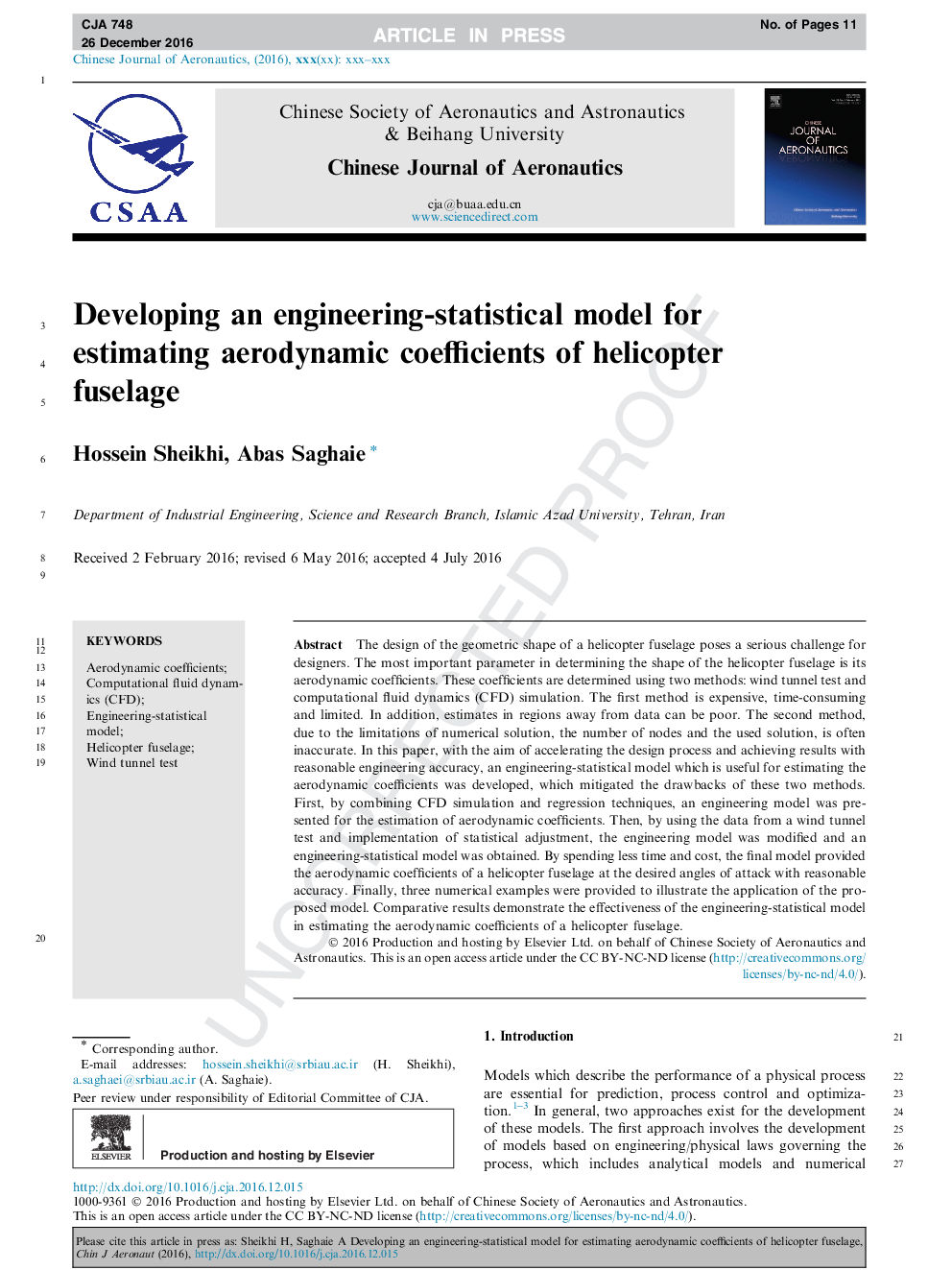| Article ID | Journal | Published Year | Pages | File Type |
|---|---|---|---|---|
| 7154162 | Chinese Journal of Aeronautics | 2017 | 11 Pages |
Abstract
The design of the geometric shape of a helicopter fuselage poses a serious challenge for designers. The most important parameter in determining the shape of the helicopter fuselage is its aerodynamic coefficients. These coefficients are determined using two methods: wind tunnel test and computational fluid dynamics (CFD) simulation. The first method is expensive, time-consuming and limited. In addition, estimates in regions away from data can be poor. The second method, due to the limitations of numerical solution, the number of nodes and the used solution, is often inaccurate. In this paper, with the aim of accelerating the design process and achieving results with reasonable engineering accuracy, an engineering-statistical model which is useful for estimating the aerodynamic coefficients was developed, which mitigated the drawbacks of these two methods. First, by combining CFD simulation and regression techniques, an engineering model was presented for the estimation of aerodynamic coefficients. Then, by using the data from a wind tunnel test and implementation of statistical adjustment, the engineering model was modified and an engineering-statistical model was obtained. By spending less time and cost, the final model provided the aerodynamic coefficients of a helicopter fuselage at the desired angles of attack with reasonable accuracy. Finally, three numerical examples were provided to illustrate the application of the proposed model. Comparative results demonstrate the effectiveness of the engineering-statistical model in estimating the aerodynamic coefficients of a helicopter fuselage.
Related Topics
Physical Sciences and Engineering
Engineering
Aerospace Engineering
Authors
Hossein Sheikhi, Abas Saghaie,
